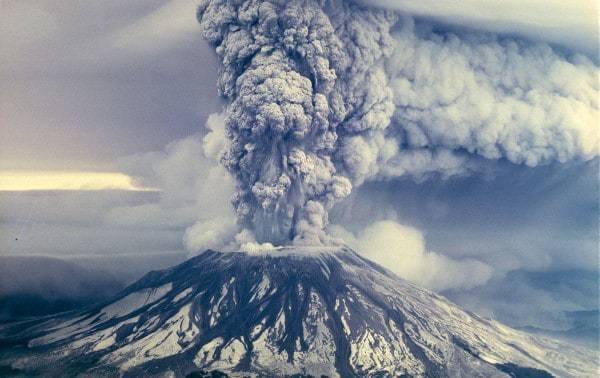The eruption of Mount St. Helens on May 18, 1980 remains one of the worst volcanic disasters in United States history. According the United States Geological Survey, the eruption was the only significant volcanic activity in the lower 48 states since the 1915 event at Lassen Peak in California.
Seismic activity started on Mount St. Helens on March 16, 1980. Four days later, the area was struck by a magnitude 4.2 earthquake. On March 23 and 24, USGS equipment picked up 174 different tremors.
The first eruption took place on March 27, which opened up a 250-foot wide vent on the top of the mountain. Ash was blown 10,000 feet into the air. Ash was found days later around 300 miles away in Spokane, Washington.

It was at that time that authorities decided to issue a ‘hazard watch’ for people living within 50 miles of Mount St. Helens. The National Guard was called in to set up road blocks to prevent access to the areas, but it was fairly easy to get around them as they only blocked main roads.
Because of the watch that was issued many of the residents of the area evacuated their homes, but quite a few refused to leave. This would prove deadly for many of them. A man named Harry Truman (no relation to the president of the same name), gained national notoriety for staying in his home. He would also die due to the main eruption.
Throughout all of April 1980, scientists monitored the mountain and noticed a bulge on the north side of the Mount St. Helens was growing much bigger. On May 18, 1980, a 5.1 magnitude earthquake shook the mountain, and the entire north side of the mountain exploded, sending poisonous ash blasting out into the countryside at around 650 miles per hour. Clouds of ash, rocks, and gas, rocketed down the mountain at 100 miles per hour, and lava flowed for miles around the entire volcano.
The eruption devastated a 230 square mile area around the mountain. It was later estimated that the blast came in around 24 megatons, which according to the USGS is 1,600 times the size of the atomic bomb that was dropped on Hiroshima, Japan in 1945.
The eruption, while not the largest in history, caused the largest landslide ever recorded. Because the mountain was covered in glaciers, there was a lot of water available. The extreme temperatures of the lava and ash caused a huge mudslide. According to scientists, these mudslides (also called lahars), moved at around 90 miles per hour, and displaced as much as 18,000,000 cubic yards of water, mud and debris (including thousands of trees that had once resided on the mountain side).
In many ways, it was these lahars that caused the most problems for people who lived well outside of the blast radius. The mud caused vast flooding downstream, affecting towns and cities all along the Columbia and Cowlitz rivers. Portland, Oregon, for example, suffered around 5 million dollars in damage from the mudslides.

The aftermath of the eruption of Mount St. Helens was devastating. Ash was found in 11 states (and 5 Canadian provinces), and the damage from the explosion and resulting ash cloud caused around $1.1 billion in property damage (around $3 billion in 2015 money).
57 people died due to the eruption and ash cloud, including 84-year-old Harry Truman.
The mountain would continue to be seismically unstable for the rest of 1980. The eruption in May 1980 would drastically change the shape of the mountain, and the viability of living in the area around the mountain.

